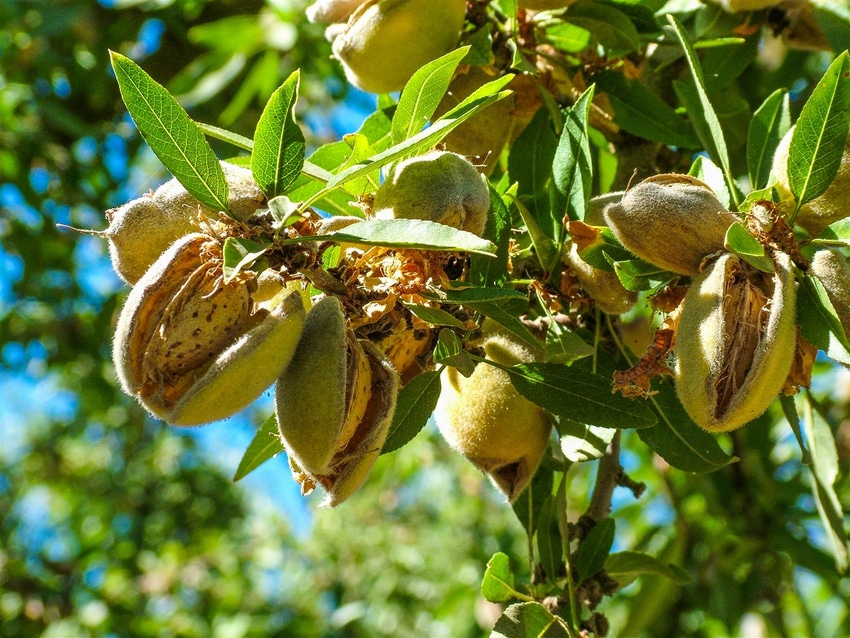July 6, 2018

UPDATED TO INCLUDE INDUSTRY COMMENTS:
Last winter’s freeze in California almonds apparently had little impact on overall crop numbers. Figures released Friday suggest growers will shake a record 2.45 billion pounds of nuts from their trees starting next month, an increase of 7.9 percent from the previous year’s production and 150 million pounds higher than growers predicted earlier in the year in their subjective forecast.
The U.S. Department of Agriculture National Agricultural Statistics Service bases this year’s survey on 1.07 million acres of bearing trees, meaning trees that were planted prior to 2015.
Late-winter concerns related to freeze damage had some in the industry thinking the mid-summer forecast could have been as low as 2.1 billion pounds. Friday’s announcement is based on objective survey measurements using standard sampling protocols and becomes the industry’s official crop estimate upon which markets will begin to set prices for the new crop.
“That’s a lot higher than I thought it would be,” said Michael Kelley, president of Central California Almond Growers, a Kerman-based huller and sheller cooperative. Kelley told members at the organization’s annual meeting last month that he expected to hull and shell over 118 million pounds this season, based on the earlier subjective forecast of 2.3 billion pounds.
Holly King, chair of the Almond Board of California and a Kern County almond grower, said this year’s survey highlights a milestone in that the state now has over one million bearing acres of almonds in the ground from Arvin to Red Bluff.
Warren Cohen, vice president of sales for Blue Diamond Almonds wrote the following in a statement published on the Blue Diamond webpage: "This estimate is on the higher side of expectations, especially considering conditions California experienced this past February. It is believed the cool temperatures after the freeze allowed for a prolonged bloom period contributing to a more optimistic crop estimate.
"Looking forward the industry will closely watch receipts of the crop during the harvest and the market will hear various rumors and opinions in the August-October time period. Typically, one needs to wait until the November Almond Board of California shipment report before having a high level of confidence in the actual crop numbers," he continued.
By the numbers
Despite earlier reports of severe to complete damage in some almond orchards due to the bloom time freeze, the survey found over 5,600 nuts per tree across 853 sampled orchards throughout the state. That includes 117 orchards in the Sacramento Valley and 736 orchards in the San Joaquin Valley. This compares to a 2013 crop survey that found nut counts as high as 7,651 per tree in the Sacramento Valley and over 6,500 nuts per tree in the San Joaquin Valley.
The Nonpareil crop, which represents about 37 percent of total almond production statewide and is the mainstay nut popular with buyers and processors, could be slightly lighter than last year’s deliveries at about 910 million pounds, according to the NASS figures.
Average nut set across the board is down 0.6 percent from last year, with Nonpareil nut set off nearly 14 percent. Average kernel weight for all varieties is down 1.9 percent from last year and unchanged in the Nonpareil crop. Nearly 99 percent of all nuts sized were sound, which is statistically in line with surveys dating back to 2003.
Sampling protocols looked at two trees per orchard block between May 29 and June 26. Trees are sampled beginning at the truck and progressing to the end of the terminal branch. Random sampling techniques are then used, after which nuts are taken and sent to a sizing station. These stations measure kernel weight, length, width, thickness and grade.
Nut set by variety showed a wide range as Butte was down 8.9 percent and Padre down 6.1 percent from last year, while Carmel is up 16.4 percent and Monterey up 15.2 percent.
Survey reliability of 80 percent confidence suggests a crop range of between 2.29 billion pounds and 2.61 billion pounds.
California produces more than 80 percent of the world’s supply of almonds. The Almond Board of California is a federal marketing order based in Modesto, Calif. with an annual budget more than $60 million, of which about two-thirds is spent on global market development.
You May Also Like




